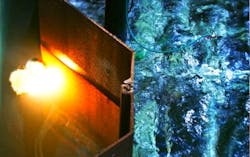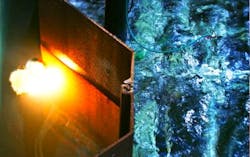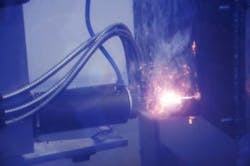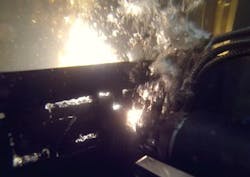Researchers develop automated laser process for cutting sheet piling underwater
Recognizing that working underwater is personnel- and time-intensive, researchers at Laser Zentrum Hannover (LZH), in collaboration with the Institute of Materials Science at the Leibniz University of Hannover (both in Hannover, Germany), is developing a laser-based, automated process for cutting sheet piling underwater.
Sheet piling protects fortified shore areas, or can be used to dry out these areas if repairs are necessary. If the sheet piling must be dismantled, divers cut the walls into smaller pieces using a cutting torch. Normally, a diver can cut about 20m per day, which corresponds to a speed of about 0.07m/min.
In the Laser Cutting Under Water for High Productivity (LuWaPro) project, the Underwater Technology Group scientists at LZH developed a process using a disk laser for torch cutting that allows divers to only carry out a supervisory role. The process can be used to separate the metal sheets, which are usually 10mm thick for sheet piling, at speeds up to 0.9m/min.
Poor visibility, currents, or uneven surfaces make working underwater more difficult. The scientists achieved a position tolerance of about 2mm in their process, enabling the system to react to possible impacts during underwater operation. The process was tested with two scenarios: standalone metal sheets cut underwater and sheets backfilled with concrete. In the second scenario, leaking of the molten material through the cutting kerf is achieved by tilting the laser head at a 20° angle.
Another advantage, compared to the hand-guided process, is the possibility of monitoring the process. Sensors reliably determine whether a cut is completed or not. Otherwise, the diver often cannot see this because of the poor visibility underwater. The laser safety necessary for this process can be guaranteed if the diver wears conventional safety goggles under the helmet.
The LuWaPro project was supported by the Federal Ministry for Economic Affairs and Energy. For more information, please visit www.lzh.de.



